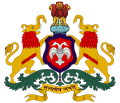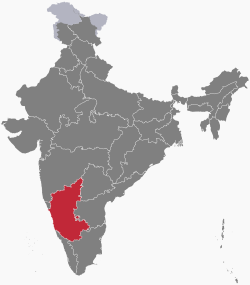| Deputy Chairman of Karnataka Legislative Council ಕರ್ನಾಟಕ ವಿಧಾನ ಪರಿಷತ್ತಿನ ಉಪಸಭಾಪತಿ | |
|---|---|
| karnataka vidhana parishathina upasabhapathi | |
 Seal of Karnataka | |
since 29 January 2021 | |
| Karnataka Legislative Council | |
| Type | Deputy Chairman |
| Status | Deputy Presiding Officer of Karnataka Legislative Council |
| Member of | Karnataka Legislative Council |
| Appointer | Members of the Karnataka Legislative Council |
| Term length | 6 Years (Maximum) |
| Inaugural holder |
|
| Website | Karnataka Legislative Council |

The deputy chairperson is next to the Chairperson, who is the presiding officer of the Karnataka Legislative Council, the main law-making body for the Indian state of Karnataka. [1] The deputy is elected by the members of the Karnataka Legislative Council (until 1973, the Mysore Legislative Council). The deputy chairperson is usually a member of the Legislative Council. [2] [3] [4] [5]